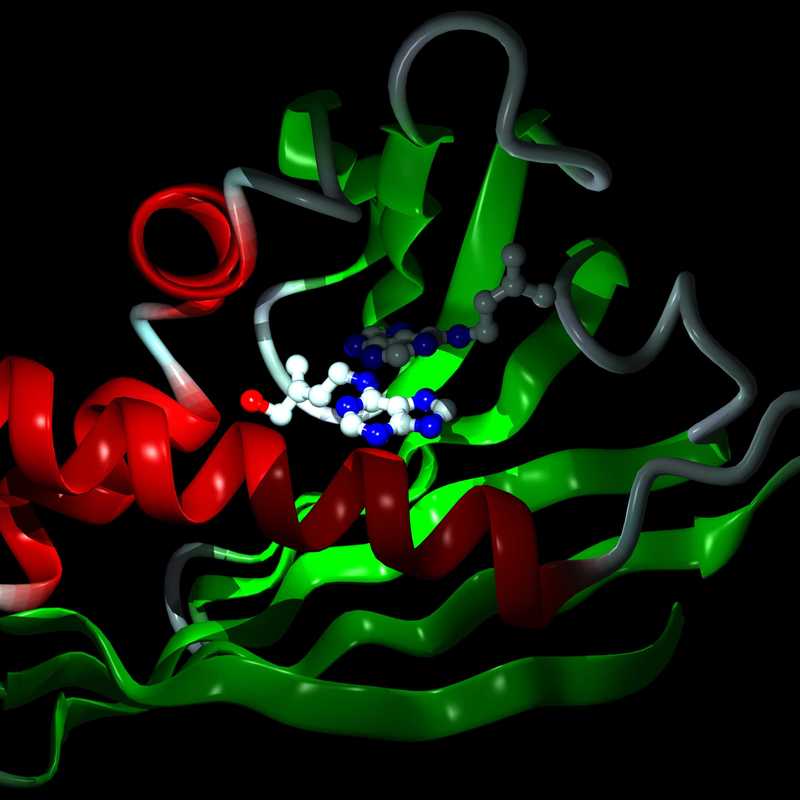Search
Deep art-science collaborations: the mother of invention
DOI: 10.17160/josha.3.3.196
Art-science collaborations organize interdisciplinary inquiries around research themes of mutual interest. The clash between art’s open-endedness, and its mortal enemy, the hypothesis-driven protocol, make it difficult for scientists to understand how art-science collaborations can be mutually beneficial. As it turns out, the boundary-challenging aspects of these collaborations often force participants to question the context of their research and their discipline’s internal culture. Deep collaborations, especially those aided by technological enhancements, could lead to a sort of creative hypothesis-generating ambiance among participants. Art-science collaborations will and should continue to proliferate as we enter a yet another renaissance showing that interdisciplinary cross-pollination is the mother of invention.
Wiktor Feliks Szokalski, The Father of Ophthalmology in Poland
DOI: 10.17160/josha.3.3.195
Wiktor Feliks Szokalski had an eventful life as a physician. He joined the Polish army in 1831. Szokalski was expatriated and immigrated to Germany, where he continued his medical studies in Gießen. He specialized in ophthalmology in Heidelberg and Würzburg. Later, he moved to Paris and became an assistant physician in Dr. Sichel’s Ophthalmological Clinic in 1838. Szokalski gave lectures in ophthalmology in Paris. After completing his French thesis on the topic “Sur la diplopie unioculaire ou la double vision d’un oeil” in 1839, he became co-editor of the Journal »L’Esculape«. In 1844 he was the founder and first president of the Society of German Physicians in Paris. He was nominated head of the hospital in Alice-Sainte-Reine (Burgundy) and kept that position for five years; in addition, he was nominated as railroad physician in Lyon. In 1853 he returned to the Kingdom of Poland and became director of Lubomirski’s Institute of Ophthalmology in 1858.
Bioinformatic Studies on Buffalo Prolactin Derived Anti-Angiogenic Peptide
DOI: 10.17160/josha.3.3.193
A 14-amino acid sequence within the buffalo prolactin (buPRL) protein has been identified by BLAST search as similar to that of somatostatin, the gold standard for determining anti-angiogenic activity. A synthetic peptide with the same sequence has been shown to exhibit powerful anti-angiogenic activity, possibly by functioning as a kallikrein-kinin system (KKS) antagonist. In order to further study this peptide’s anti-angiogenic nature, bioinformatics tools were used to analyze its interaction with the bradykinin B1 receptor, which is a component of the KKS. Molecular docking studies were conducted in silico using structures of bradykinin B1 receptor obtained by homology modeling using SWISS-MODEL via the EXPASY web server, as well as a structure of the synthetic peptide that was modeled by the PEP-FOLD de novo modeling server.
JOSHA Table of Contents - Volume 3 Issue 2
DOI: 10.17160/josha.3.2.188
The current issue of the Journal of Science, Humanities and Arts brings us eight novel contributions to the scientific, humanities, and arts fields. Herein we cover the cultural celebration of the International Women’s Day, the importance of pharmaceutical patents, the highlights from the international conference in philosophy and cancer, the annual announcement of the IMBS application openings, the work of the great artist Anja Vollmer, and the update on the discoveries made by Victor Boleslaw Wicherkiewicz on innovative surgical and the conservative treatments of ocular diseases. We are confident that this issue will add relevant information to the scientific, humanities, and arts communities. Overall, we expect this volume to be filled with worth-spreading scientific discoveries, discussion-worth humanities issues, and inspiring art contributions.
The innovative surgical and the conservative treatments of ocular diseases by Victor Boleslaw Wicherkiewicz (1847-1915)*
DOI: 10.17160/josha.3.2.122
Background: To call attention to the surgical procedures by Boleslaw Wicherkiewicz. Methods: Evaluation of Wicherkiewiczof important publications which were published in German journals. Results: Victor Boleslaw Wicherkiewiczsl published about 300 papers in several languages, mainly in Polish and German. His innovative surgical methods were concerned with several ocular diseases, such as trichiasis, distichiasis, ectropion, lid replacement, free skin transplantation, corneal staphyloma, lid coloboma, eye muscle -, and cataract surgery. His conservative treatments were concerned with corneal diseases, and glaucoma. In addition, he studied the effect of Cocaine on the eyes. He reported on congenital ectropium uveae, and on bilateral anophthalmus. In addition, Wicherkiewicz described a bilateral epibulbar dermoid combined with auricular anomalies that was later called Goldenhar syndrome.
IMBS Winter School, Freiburg September 2016 - January 2017
DOI: 10.17160/josha.3.2.117
The University of Freiburg offers The Winter School in Biomedical Sciences, which is a 5 months program. The students will receive a Diploma of Advanced Studies in Biomedical Sciences (DAS) upon successfully completing the program, consisting of 30 Credit Points in the European Credit Transfer System (ECTS). This international program is designed as an intensive time of studies and research with a specific and practical training that qualifies for success in academia or the private sector. The modules focus on the following topics: Pharmacology and Toxicology, Materials and Microsystems, Molecular Medicine, Immunology, Pathology, Molecular Oncology, Genetics of Disease and Cancer, Molecular and Cellular Biology, Statistical Bioinformatics and Bioethics. Participants are encouraged to choose a personal research project which involves experimental work, data analysis and a scientific research publication.
IMBS Class 2017-19 Application Now Open
DOI: 10.17160/josha.3.2.109
The International Master in Biomedical Sciences (IMBS) is pleased to announce that the application for the class 2017-2019 is now open. The IMBS program was established in 2008 as a joint program between the School of Medicine of Albert-Ludwigs-University of Freiburg (ALU), Germany, and the Schools of Medicine and Pharmacy and Biochemistry of the University of Buenos Aires (UBA), Argentina. The aim of this program is to train prospective researchers in scientific knowledge and state-of-the-art experimental experience in current and emerging biomedical research areas with a focus on translational research and development. It is also meant to foster teaching and research cooperation between the two Universities and to contribute to the cultural exchange on the master, PhD, and academic levels.
International Conference PHILOSOPHY AND CANCER (IHPST Paris) April 28,2016
DOI: 10.17160/josha.3.2.106
International Conference PHILOSOPHY AND CANCER APRIL 28TH, 2016 Institute for the History and Philosophy of Science and Technology (IHPST) 13 rue du Four 75006 Paris Second Floor, conference room 9:30 – 18:00 Organized by Lucie Laplane (CNRS IHPST & UMR 1170) and Thomas Pradeu (CNRS & University of Bordeaux). Funded by IHPST, University Paris I Panthéon-Sorbonne (BQR), and University of Bordeaux (IDEX Chair Thomas Pradeu) This timely and important international conference on Philosophy and Cancer addresses novel concepts of understanding cancer and cancer treatment. Stimulating communication and interaction between scientists, doctors and philosophers should contribute to identify priorities and innovative concepts for further research. In the attached pdf you will find the program and the abstracts of all contributions.
International Patent Regimes and Access to Medicines: Is the Health Impact Fund an Effective Solution?
DOI: 10.17160/josha.3.2.105
Patents are currently the most common mechanism to stimulate pharmaceutical innovation. They are considered an efficient allocation mechanism and a system in which fewer resources are squandered. Patents are of importance for pharmaceutical companies, since innovation is expensive with developing costs per new drug at more than 2 billion U.S. Dollars. In 1995, members of the World Trade Organization (WTO) signed the agreement on Trade Related Aspects of Intellectual Property Rights (TRIPS) to standardize patent rights in an international context. The trade agreement entails strict patent protection laws, i.e. a market exclusivity for patented drug over a period of at least 20 years. One of the main incentives to design the TRIPS agreement was to create a reward mechanism for pharmaceutical companies in order to recover costs, to make profits and importantly, to promote research and development (R&D) for diseases that affect developing nations.
JOSHA - Table of Contents Volume 3 Issue 1
DOI: 10.17160/josha.3.1.103
The JOSHA editors are happy to launch the first issue of volume 3. The editors are especially thrilled to present the paper “Cancer: Modeling evolution and natural selection, the “Mitosis Game” by Roland Mertelsmann and Maximilian Georg. As stated in the title, this paper presents a computer game that depicts the cellular evolution for oncogenesis and the clinical course of malignant disease. The authors have designed a tool to both to better understand and to facilitate studying evolution in silico. The conceptual framework of the game is based on ten key intrinsic parameters of cells, which the authors call “The Hallmarks of Evolution”. Furthermore, Dieter Schmidt offers a very interesting historical account of “giant cell arteritis”. In his article “Schläfenarterienentzündung mir Erblindung: Berichte über Zeichen einer Arteriitis temporalis im 18.



.jpg?1463749486)




.JPG?1461318220)
.jpg?1458079579)